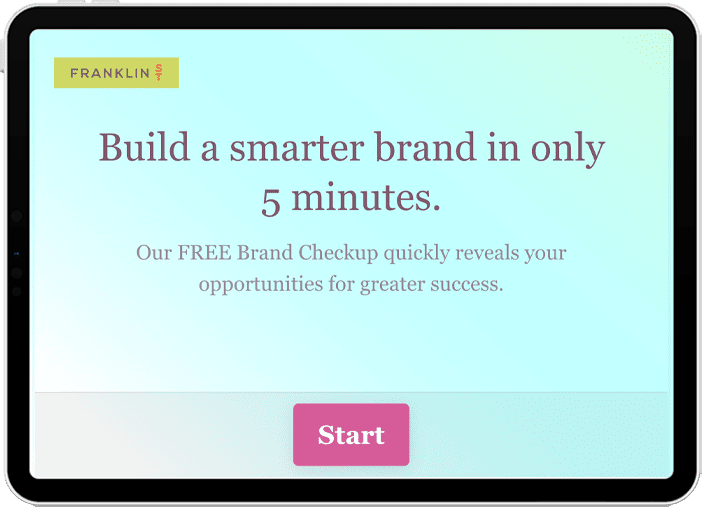A home run. Every time.
I can count on these french fries because I am the textbook loyal customer. My expectations drive my behavior. I’ve been conditioned to believe I will receive a consistently positive experience. And because I do, I am loyal.
As marketers, we know making customers happy during one single transaction or experience simply isn’t enough. To build loyalty, we must meet–and exceed!–our customers’ needs and expectations during each engagement.
And in healthcare, our customers’ needs often extend across a significant journey.
Consider this example.
After a head cold recently developed into a sinus infection, I conceded I wasn’t successfully managing the situation without medicine and called to see my doctor. I couldn’t get in to see her that day, so I took an appointment at another facility–same practice, just a different office.
Through the congestion, aches and watery eyes, I immediately noticed differences between the two offices. The office I usually visit is run like a well-oiled machine. I trust my doc implicitly; she’s a smart and careful clinician, personable and keenly perceptive. The staff are friendly and knowledgeable; the office space welcoming and even calming.
The sister facility was a bit different.
A wind chime attached to the main door dinged each time someone came in, as if to say, “Everyone, look! A patient has arrived!” A hand drawn sign on red construction paper directed patients to sign in, complete with an arrow pointing to a deteriorating clipboard with a pen attached. The pen had bells on it…more dings. “The new patient is signing in now!”
I took a seat, and in an effort to ignore the television blaring a morning game show, flipped through a 3-year-old copy of Car and Driver magazine with the address label haphazardly ripped off. Between the incessantly ringing telephone, I was treated to the details of the receptionist’s weekend. She and a friend saw a movie (she really liked it), her dog was spending the day at the groomer’s (his hair mats easily), and she got a new dress (it was half off).
More patients came in (cue the ringing bells), some were called back (actually, the nurses half hollered for them…ATKINS? HALL? LEWIS?), while the rest of us sat a bit dazed.
In the cacophony of ringing telephones, dinging door chimes, gossiping staff and cheering game show contestants, I regretted not waiting to see my regular physician.
I also wondered how a visit to two offices of the same practice could be so different.
Visits to my doctor’s office are marked by exceptional clinical care, personal touches and a sense of trust. I left the sister facility feeling over stimulated and overwhelmed.
Did I have a bad experience? Not really. But it was different. And I noticed.
Some of us stay in shape running, playing tennis or underwater basketweaving. Shopping is my sport of choice. I don’t mean to brag, but I’m very good and improving. During a recent “training” exercise, I visited a favorite store, and when it was time to check out, I waited while the woman ahead of me paid. After swiping her credit card, the cashier handed it back to the lady, walked around the counter and handed the packages to her.
Next up…me. I also paid with a credit card, but after the swipe, the cashier set it down and slid it across the counter to me. She did not walk around to hand my bags to me, but rather sat my packages on the counter top.
Did I have a bad experience? No!
Was my experience the same as the customer ahead of me? Nope. And I noticed.
Here’s my point. When a patient visits your facility–any facility bearing your organization’s logo–what do they expect? Will the experiences be consistent from visit to visit? Are experiences consistent from patient to patient?
Every time and in every way the brand touches the customer must be consistent.
Consistency is important. Consistently positive experiences build trust.
Trust builds loyalty.
And loyalty to a brand is paramount.
Try this simple exercise.
Take a walk through your facility. Choose one area at first–the emergency department, a primary care office, surgical scheduling. Observe what’s happening from your patients’ perspective.
Are the experiences you witness consistently positive? Are the experiences consistent from one patient to the next?
Think about all of the ways your brand touches a patient–and their caregivers. Everything from the website to call center scripts to staff to the physical environment impacts your patients’ perspective of your organization. And every time your patients interact with your brand, their level of engagement and loyalty is impacted.
When you’re ready to crack this nut, check out what we’ve written about Patient Journey Mapping. You’ll find some great tips to get started.
Whether the consumer is buying french fries, clothing or healthcare, loyal consumers come back.
And customers who come back are a really good thing.


